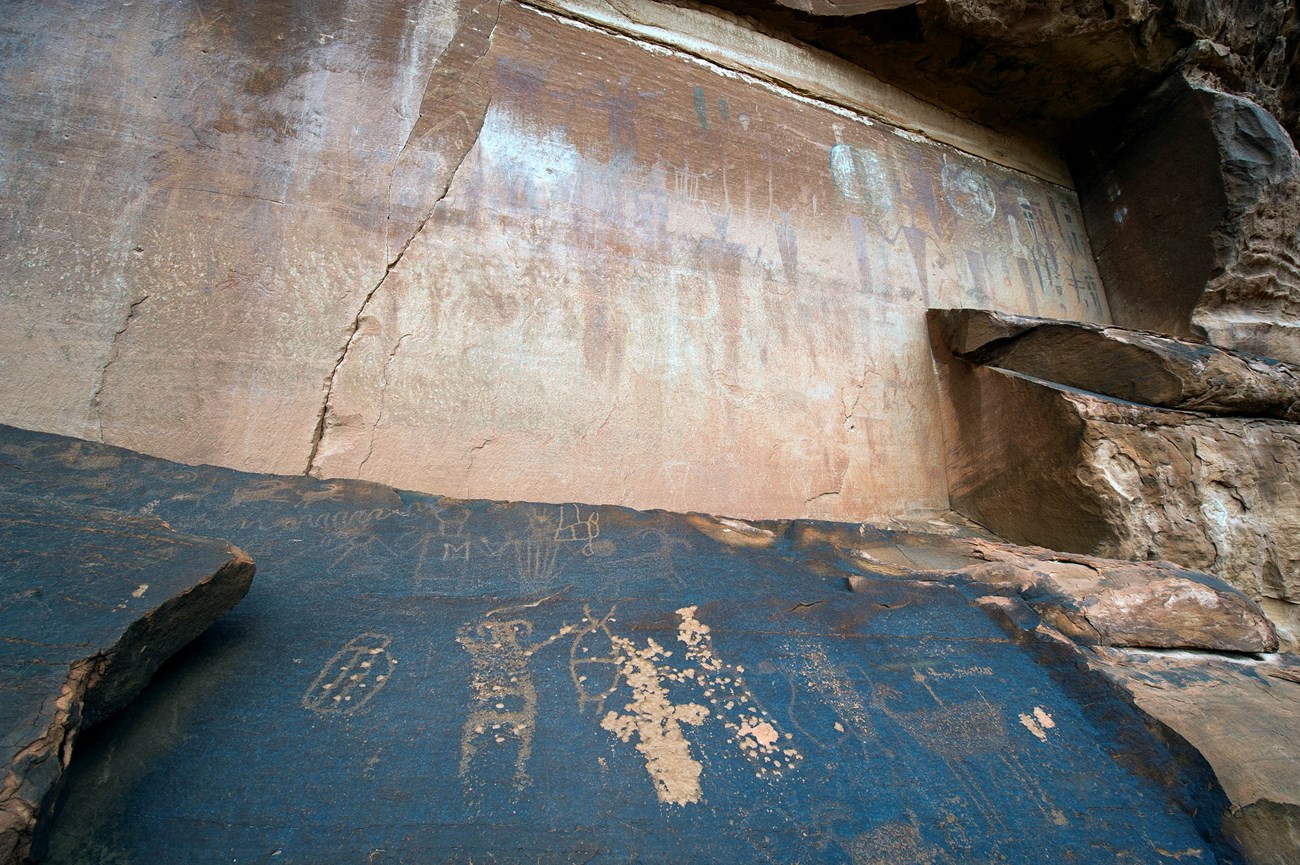Last updated: May 5, 2025
Article
Why Were Petroglyphs, Pictographs, and Inscriptions Made?

NPS photo.
People in the past made petroglyphs, pictographs, and inscriptions to capture or convey aspects of their cultures and beliefs. While the full purpose and meaning of the markings is lost to people viewing them today, archeologists and historians have clues based on their research. Native American descendants offer knowledge passed down through generations about what the markings meant. Many markings are part of living cultural traditions.
Native Americans used rock markings to map sacred sites, leave warnings, note plants or animals, and document messages or prophesies. The markings may have told a story, marked a trail, or commemorated an event. They may have ensured fertility, successful hunting, or tracked the seasons or special celestial events.
Europeans made inscriptions during travel and exploration. They left words, names, letters, and numbers; Christian symbols; animals; and other motifs. Travel logs and historical records provide insight into the markings.
Time, space, and cultural differences make it hard to know why people in the past left rock markings. Part of our connection to them today is speculating and imagining the meanings they tell. When you visit petroglyphs, pictographs or inscriptions, use your imagination and take in your surroundings to interpret their possible meanings.
Learn more: Petroglyphs
